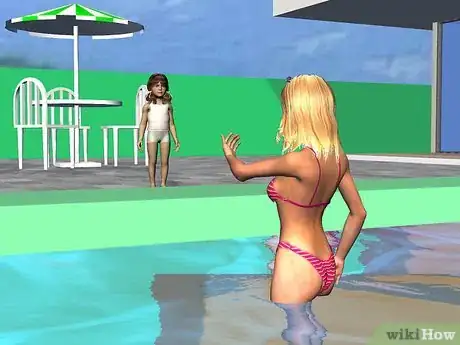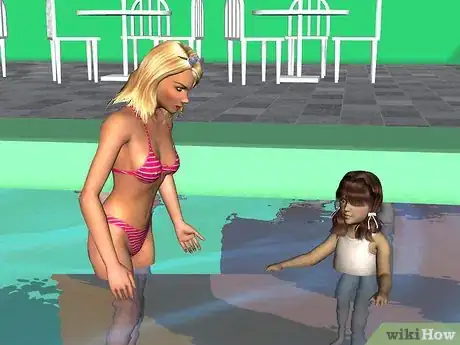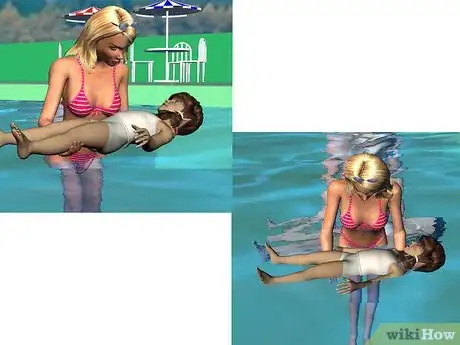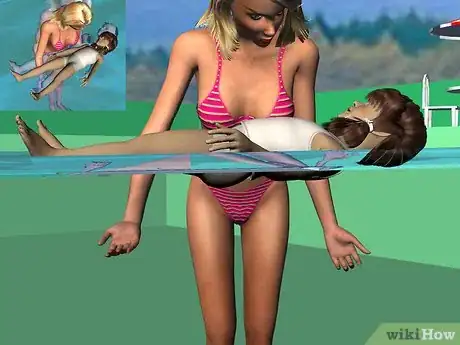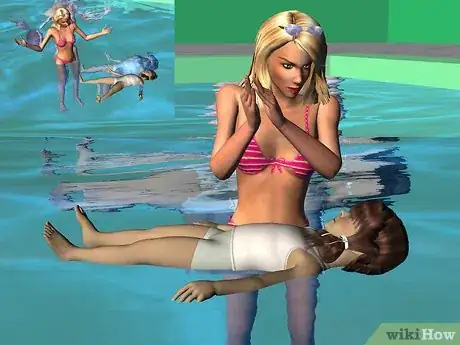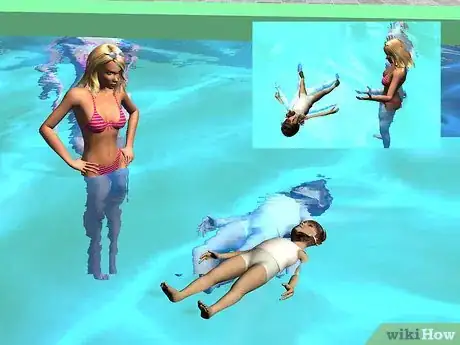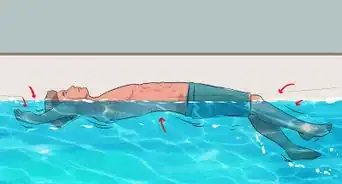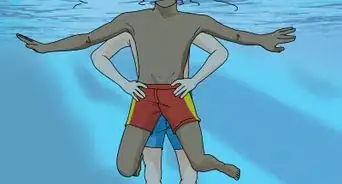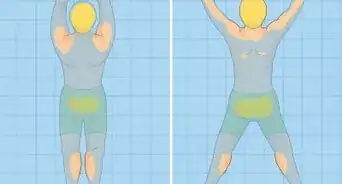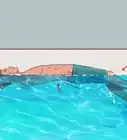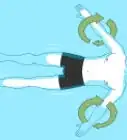X
wikiHow is a “wiki,” similar to Wikipedia, which means that many of our articles are co-written by multiple authors. To create this article, volunteer authors worked to edit and improve it over time.
This article has been viewed 32,665 times.
Learn more...
Teaching a child to float on their back is challenging. However, it is undeniable that learning to float is an important and even a life-saving skill.
Steps
-
1Encourage the child. Encourage them to get into the water to learn to float. True, children don't realize how learning to float will benefit them. For them it is just a waste of time. Time they could use to play Lego or play with their tablets. Promise them a reward every time they go into the water. Rewards like buying them ice-cream, candy, or play time with a favorite toy or willing person (you, a relative, a play-date, etc) will likely be enough to make them eager to accomplish the task you wish them to do. Make sure that you do give them the reward they worked hard for, or else you will only lose their trust, which will be very hard to regain.
-
2Make them comfortable. Make them feel safe in the pool with you. Go to the shallowest part of the pool. Then, let them play in the water for a while if they wish. If there are any signs of resistance, remind them of the reward they will receive when they coordinate and follow your instructions.[1]Advertisement
-
3Carry them gently and let them lie on their back. Let them know how long you will do this. Tell them to count 10 seconds slowly in their head and that you will carry them again after the given period of time. Do this exercise 3 more times.[2]
- Using floating devices for the arm might be useful, but if none, your arms will serve as the child's assistance to float. Be extra careful that water doesn't get in their mouth or nose, as this might give the child a bad experience and use it as an excuse to why they doesn't want to continue.
-
4Slowly release your arms from their back. Do this after the previous exercise. Tell them that you will do the same exercise, but you will slowly release your arms. Instruct the child to lie as parallel to the ground as possible, as horizontal as possible. Also, explain to them in a non-boring manner the importance of acquiring as much surface area as possible. When you know that the child will sink, assist them with your hands. Then, little by little, stop the assistance.[3]
-
5Practice. Do the second exercise once more, then praise and be cheerful. Tell them how fast they learned and how good they did. Encourage them to do the exercise again cheerfully. Make sure the fun factor is always there.[4]
- Once they agree, repeat the second exercise and gradually increase the challenge and difficulty by again, slowly releasing the assistance from your hands. This time, make them move their hands and kick slowly to generate greater surface area. This will make them more confident and secure.
-
6Reward the child for their hard work. Encourage them to do the exercise in another day for another treat. Again, tell them how well they did, and how awesome they looked while floating. Tell them how fast they learned, too.
-
7Continue to practice. A child without any back round in swimming won't be able to learn this overnight. Correct practice makes perfect. Continue to practice and do the exercises. a child will ideally learn to float within a week or two.
Advertisement
Community Q&A
-
QuestionHow can I teach my son to float on his back if he sinks by his legs?
 Community AnswerGet in the water with him and hold his legs up until he can float on his back comfortably. Eventually he will learn to tense his legs while he floats so that they stay on top of the water as well, but this might take some practice.
Community AnswerGet in the water with him and hold his legs up until he can float on his back comfortably. Eventually he will learn to tense his legs while he floats so that they stay on top of the water as well, but this might take some practice.
Advertisement
Things You'll Need
- Swimming pool
- Floatation device (optional)
References
About This Article
Advertisement
